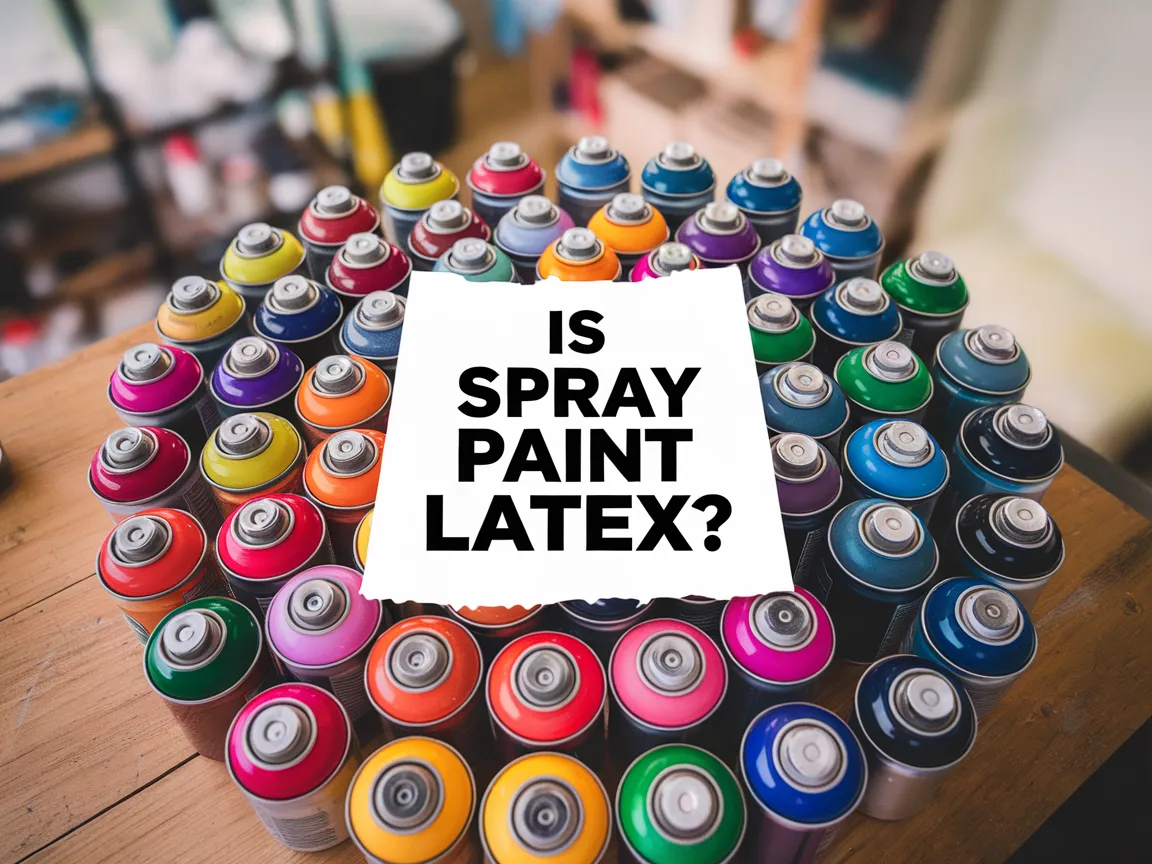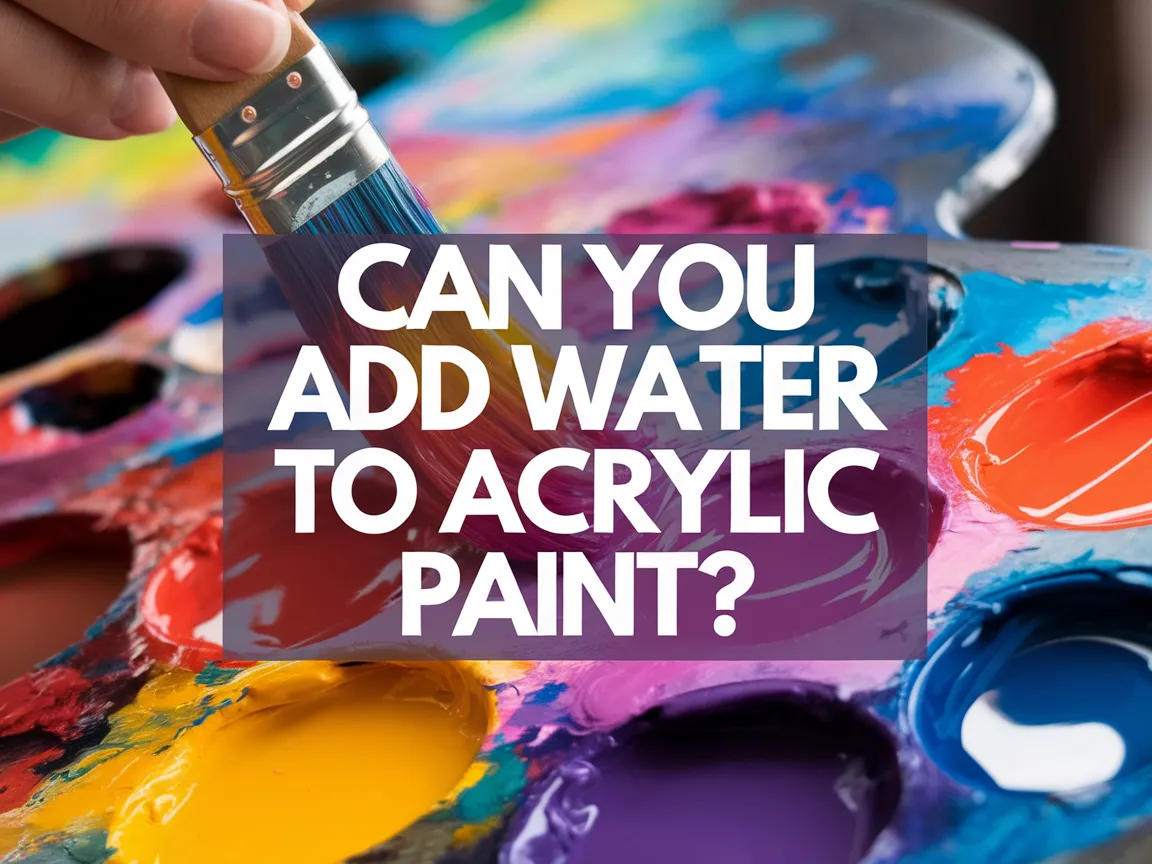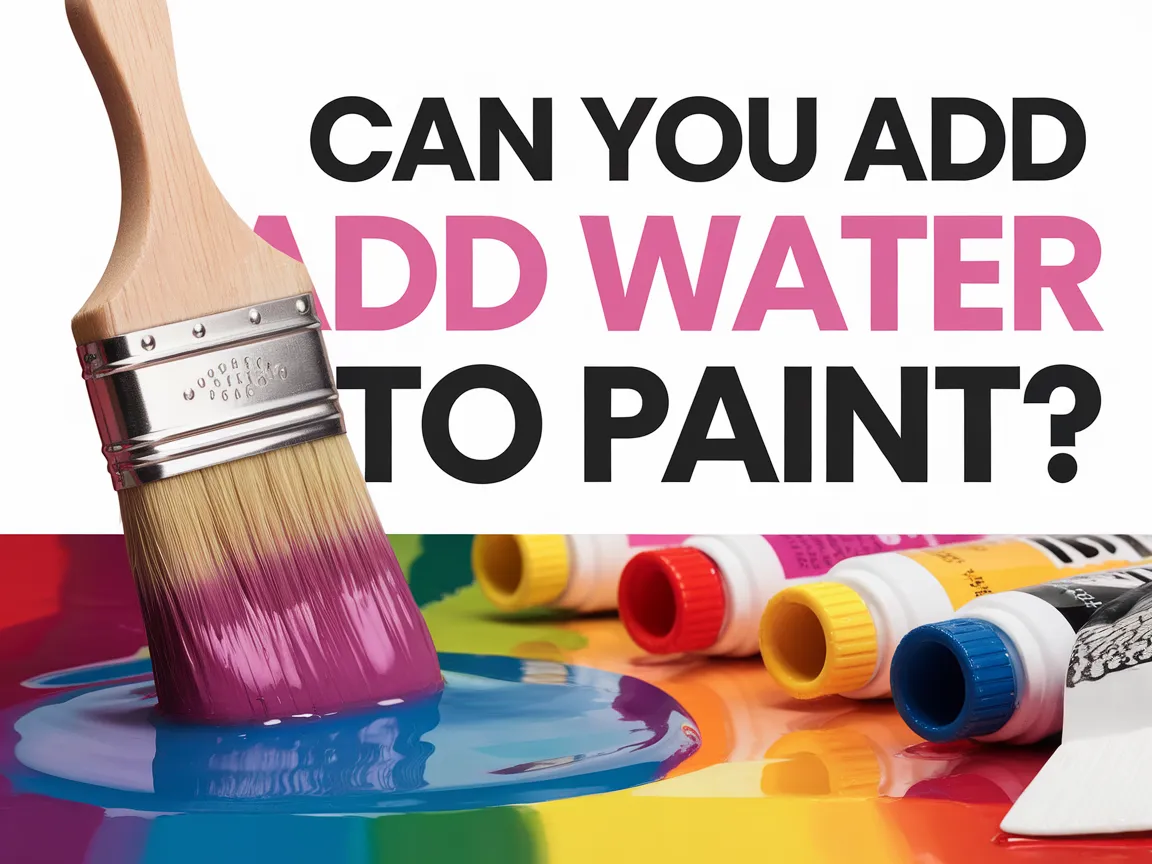What is Alkyd Paint?
Published on: February 28, 2025 | Last Updated: January 7, 2025
Written By: Sarah McClintock
Alkyd paint is like magic color juice that sticks really well! It’s made from special oils, which helps it become shiny and last a long time.
Knowing what alkyd paint is super important if you want your craft projects to shine. I remember using it on a wooden box, and the colors popped like a rainbow after it dried.
In this article, you’ll learn about what alkyd paint is, different types of alkyd paints, how to prep metal for paint, essential tips before using it, and creative DIY project ideas. Whether you’re painting an aluminum boat or just a fun craft, let’s get started!
Contents
- 1 What is Alkyd Paint?
- 2 What Exactly is Alkyd Paint?
- 3 Essential Considerations Before You Start Using Alkyd Paint
- 4 Step-by-step Process to Use Alkyd Paint
- 5 Types Of Alkyd Paint: Understanding Your Options
- 6 Alkyd Paint vs. Other Paint Types: What’s the Difference?
- 7 Common Applications of Alkyd Paint in Various Projects
- 8 Factors Affecting the Performance Of Alkyd Paint
- 9 Common Issues When Using Alkyd Paint and How to Overcome Them
- 10 Common Misconceptions About Alkyd Paint
- 11 Environmental Impact of Alkyd Paint
- 12 Finishing Touches: Making Your Alkyd Paint Project Shine
- 13 Creative DIY Project Ideas With Alkyd Paint
- 14 Frequently Asked Questions About Alkyd Paint
- 15 Conclusion: The Benefits and Versatility Of Alkyd Paint in Your Projects
- 16 Additional Resources
What is Alkyd Paint?
Alkyd paint is a type of oil-based paint made from synthetic resin. It dries fast and provides a hard, durable finish. People often choose it for woodwork and metal surfaces. It’s perfect for both indoor and outdoor projects.
What Exactly is Alkyd Paint?
Alkyd paint is a durable oil-based paint. Its formula typically contains vegetable oil, synthetic resins, and solvents, resulting in a thick, glossy finish that dries quickly and resists moisture and wear. Artists and painters have long appreciated alkyd’s unique properties for creating stunning visual effects and exploring innovative painting techniques.
The Finishing Touch
A freshly painted wall is a blank canvas. The best way to bring your room to life is with a single piece of statement art that ties everything together.
Browse Wall Art at Big Wall DecorYou might wonder how this paint enhances your projects. Personally, I’ve used alkyd paint for home improvements, and I was amazed at how smoothly it applies, creating a strong, vibrant color that really pops.
I had a friend who relied on it for painting his aluminum boat. He always raved about how to prep (Prepare) aluminum for paint, emphasizing the importance of a clean surface. With the right prep, alkyd paint provides a lasting finish, giving the boat a fresh look season after season.
Essential Considerations Before You Start Using Alkyd Paint
What do you need to get started?
- High-Quality Alkyd Paint: Choose brands like Winsor & Newton or Liquitex for excellent coverage. This ensures your project features vibrant colors.
- Proper Primer: Use BIN Shellac primer for metal surfaces. Priming helps the alkyd paint adhere better and last longer, especially on aluminum.
- Brushes and Rollers: Invest in synthetic brushes like the Wooster Alpha. They apply paint evenly and prevent streaks.
- Paint Thinner: Use mineral spirits like 3M’s Solvent, which clean up easily and effectively after painting. This makes cleanup hassle-free.
We have now covered important factors to consider before using alkyd paint. The next section will detail the step-by-step application process.
Also See: Can You Rent a Paint Sprayer From Home Depot?
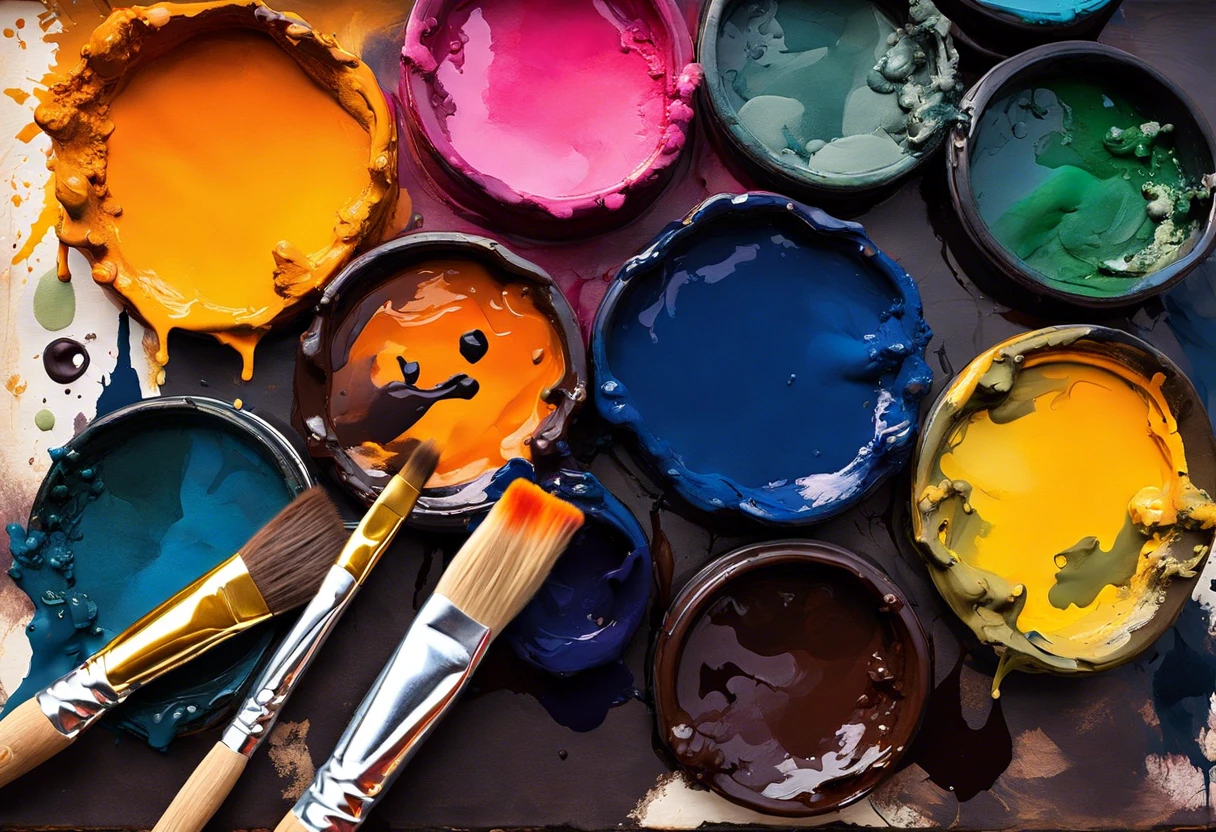
Step-by-step Process to Use Alkyd Paint
Here’s a guide to using alkyd paint for a smooth, lasting finish.
The Finishing Touch
A freshly painted wall is a blank canvas. The best way to bring your room to life is with a single piece of statement art that ties everything together.
Browse Wall Art at Big Wall Decor-
Prepare Your Surface
Start by cleaning your surface thoroughly. If you’re working on aluminum, use a degreaser and scuff it with 220-grit sandpaper. This helps the paint adhere better.
After sanding, rinse off dust and let it dry completely. A clean, dry surface improves the bonding of alkyd paint for a smoother finish.
-
Prime Before Painting
Using a metal primer is crucial when applying alkyd paint. A good primer enhances adhesion and speeds up drying. I recommend an oil-based primer made for metal.
Apply the primer evenly and let it dry for about 24 hours. Then, lightly sand the primed area for a smoother base coat.
-
Apply Alkyd Paint
When you’re ready to paint, use a quality synthetic brush or a paint sprayer. I find that a sprayer gives more even coverage on larger areas. Use steady strokes to avoid drips and imperfections. If you’re struggling with paint application techniques, key clip paint methods can help improve your results.
For the best results, apply two thin coats. Allow each coat to dry for 12-24 hours before adding the next. This enhances the durability of the finish.
-
Check Drying Conditions
Temperature and humidity significantly affect the drying of alkyd paint. Ideally, keep temperatures between 50°F (10°C) and 85°F (30°C) with low humidity.
Be aware that alkyd paints can take up to 48 hours to fully cure. Drying time may extend in high humidity, so plan accordingly to avoid smudging.
That covers the step-by-step process for using alkyd paint. Let’s now take a look at the different types of alkyd paint.
Types Of Alkyd Paint: Understanding Your Options
Let’s explore the various types of alkyd paint: Stain-Blocking, High-Gloss, Satin, and Extendable Alkyd Paint.
-
Stain-blocking Alkyd Paint
This type prevents stains from bleeding through surfaces. It’s ideal for priming porous materials and provides a smooth finish.
-
High-gloss Alkyd Paint
This paint offers a shiny, reflective finish and is durable enough for high-traffic areas. It provides excellent washability, making it perfect for cabinets and trim.
-
Satin Alkyd Paint
Satin finish balances gloss and matte. It’s easy to clean and resistant to dirt, making it a great choice for interior walls.
-
Extendable Alkyd Paint
This paint can be thinned with solvent, adding versatility during application. It helps achieve a smooth finish while allowing for greater working time.
Having been in the field for a while, I find Stain-Blocking Alkyd Paint to be my go-to. Its impressive stain resistance and ease of use make it a top choice for painting various surfaces.
We have now covered the different types of alkyd paint and their options. Next, we will compare alkyd paint with other paint types.
Alkyd Paint vs. Other Paint Types: What’s the Difference?
Understanding how alkyd paint compares to other paint types can help you make the right choice for your projects.
| Paint Type | Base | Drying Time | Durability | Best Uses |
|---|---|---|---|---|
| Alkyd Paint | Oil-based | 6-8 hours (touch dry) | Very Durable | Metal, Wood, Outdoor Furniture |
| Latex Paint | Water-based | 1-2 hours (touch dry) | Less Durable | Indoor Walls, Ceilings |
| Acrylic Paint | Water-based | 30 mins to 1 hour (touch dry) | Durable | Art Projects, Indoor and Outdoor Surfaces |
| Enamel Paint | Oil or Water-based | 1-4 hours (touch dry) | Durable | Trims, Cabinets, Indoor Furniture |
While alkyd paint takes longer to dry compared to latex and acrylics, it outshines in durability, making it ideal for high-traffic areas and outdoor applications. I’ve often reached for alkyd when I need a robust finish that lasts.
We covered the differences between alkyd paint and other paint types. We will now explore common applications of alkyd paint.
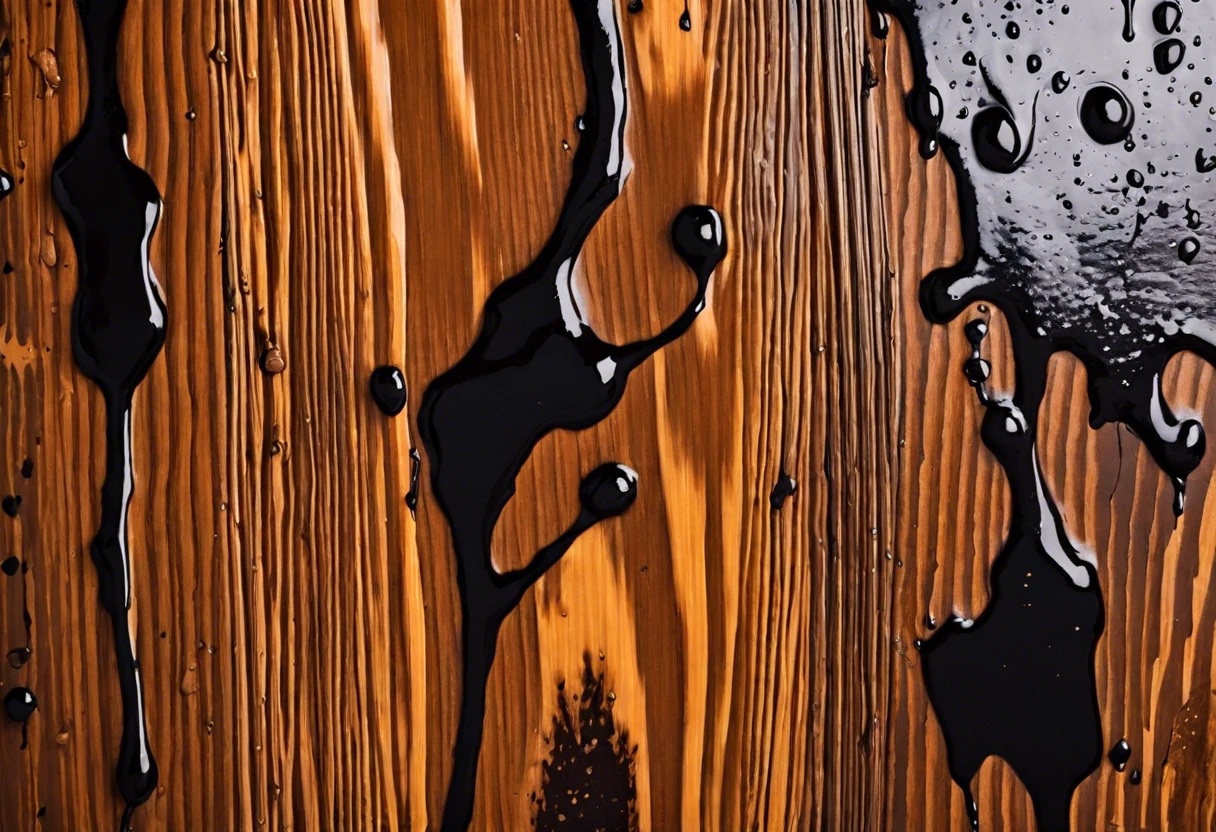
Common Applications of Alkyd Paint in Various Projects
Knowing where to use alkyd paint can maximize its benefits. Here are some popular applications:
- Furniture Restoration: Revitalize old furniture with a glossy finish.
- Exterior Trim: Protect your home’s exterior with a durable coat.
- Metal Surfaces: Use on railings, fences, or outdoor decor.
- Art Projects: Ideal for creating vibrant, long-lasting art pieces.
- Crafts: Perfect for DIY projects like model making or home decor.
In my experience, using alkyd paint for outdoor projects is a game changer. It really stands up to the elements, giving surfaces a fresh, long-lasting look.
Factors Affecting the Performance Of Alkyd Paint
What factors impact the durability and finish of alkyd paint?
-
Temperature: High temperatures speed up drying, but may make the paint brittle.
-
Humidity: High humidity slows the drying process, affecting the finish.
-
Surface Preparation: Proper preparation of aluminum is crucial for good adhesion.
-
Application Technique: Applying paint too thickly can cause peeling or an uneven texture.
Common Issues When Using Alkyd Paint and How to Overcome Them
My friend struggled with using alkyd paint on his aluminum boat. It took a long time to dry, and the finish was uneven.
To fix this, he thinned the paint by 30% with mineral spirits (9.5 L) and ensured the temperature was above 20°C (68°F). This helps it glide on smoothly and dry correctly.
The Finishing Touch
A freshly painted wall is a blank canvas. The best way to bring your room to life is with a single piece of statement art that ties everything together.
Browse Wall Art at Big Wall Decor
Common Misconceptions About Alkyd Paint
Let’s clear up some myths about alkyd paint that might be floating around!
-
Myth 1: Alkyd Paint is Only for Professionals
No way! Alkyd paint is user-friendly enough for beginners. Grab a brush, and you’ll be painting like a pro in no time!
-
Myth 2: Alkyd Paint Dries Too Slow
While it does take longer than latex paint, it’s still pretty quick! Expect touch dry in about 6-8 hours.
-
Myth 3: It’s All the Same
Not true! Alkyd paint comes in different finishes like satin and high-gloss, suited for various projects.
-
Myth 4: Alkyd Paint is Difficult to Clean Up
With proper use of mineral spirits, cleanup is a breeze! Just be sure to wash your brushes soon after use.
Environmental Impact of Alkyd Paint
Have you thought about how alkyd paint fits into sustainability? Let’s break it down.
| Factor | Impact | Alternatives |
|---|---|---|
| Volatile Organic Compounds (VOCs) | Alkyd paints can emit VOCs during drying, impacting air quality. | Look for low-VOC options or water-based paints. |
| Durability | Durable finishes mean less frequent repainting, reducing waste. | Consider sustainable wood finishes or eco-friendly paints. |
| Disposal | Dispose of paints properly to reduce environmental harm. | Check local regulations for safe paint disposal. |
Using alkyd paint smartly means balancing the beauty of vibrant colors with the planet’s health. Choose wisely!
Finishing Touches: Making Your Alkyd Paint Project Shine
After your alkyd paint dries for 24 hours, apply a clear topcoat like Spar Urethane for added durability. Wait 72 hours before heavy use—the paint needs time to cure fully.
Inspect your surface for uneven sheen; it’s crucial. Alkyd paint can dry with patches. Look for spots where the texture differs and consider using a Fine Surface Prep Pad for specific issues.
Here’s an insider tip: Use a solvent-based enamel thinner if you notice brush strokes or missed sections. Mix it carefully with your alkyd for a smooth finish—perfect for touch-ups!
Creative DIY Project Ideas With Alkyd Paint
Ever thought about turning old furniture into a masterpiece? How about painting a vibrant mural on your garden shed?
For these projects, you’d need some alkyd paint, brushes, and primer. Roughly, plan on spending around $40 to $100 and set aside a weekend.
If you’re looking for alternatives, try using chalk paint for a matte finish or spray paint for quicker projects. I’ve found that latex-based paints can also work wonders for a softer look!
Frequently Asked Questions About Alkyd Paint
Is Alkyd Paint Safe to Use Indoors?
Yes, alkyd paint is safe to use indoors. It contains low levels of volatile organic compounds (Vocs), usually less than 50 grams per liter (
How Long Does Alkyd Paint Take to Dry?
Alkyd paint typically takes about 6 to 8 hours to dry to the touch. Full curing can take up to 48 hours, depending on the ambient temperature and humidity levels. Warmer weather with lower humidity speeds up the drying process. If you’re wondering about applying primer over existing paint, you might want to check primer application techniques.
Can I Thin Alkyd Paint for Better Application?
Yes, you can thin alkyd paint for better application. Use mineral spirits or a paint thinner, limiting to about 10% of the paint volume. Thinning enhances flow and leveling, making it easier to achieve a smooth finish, especially on intricate surfaces. Professional painters often explore unique paint techniques that reveal fascinating color application methods.
What Surfaces Can I Use Alkyd Paint on?
You can use alkyd paint on various surfaces like wood, metal, and previously painted surfaces. It’s particularly useful for outdoor furniture and trim because it provides a hard, durable finish, resistant to wear and moisture. If you’re considering painting a boat, you might want to explore specialized marine painting techniques that ensure protect your watercraft effectively.
How Do I Clean Up After Using Alkyd Paint?
Cleaning up after using alkyd paint is straightforward. Use mineral spirits or paint thinner for brushes, rollers, and spill spots. Always dispose of leftover paint and cleaning materials according to local regulations, often found at waste management facilities.
Does Alkyd Paint Require Primer?
Yes, alkyd paint often requires a primer, especially on porous surfaces. Using a primer creates an even base, improving adhesion and reducing the number of paint coats needed. This leads to better finishes and cost savings in the long run. If you’re wondering about specific painting techniques for apartment walls, painting apartment walls correctly can make a significant difference in your project’s outcome.
Is Alkyd Paint Good for Outdoor Use?
Yes, alkyd paint is great for outdoor use. Its hard, durable finish withstands harsh weather conditions and resists fading from UV light. This makes it a popular choice for items like fences, doors, and outdoor furniture. If you’re curious about specialized painting techniques like diamond painting drill methods, there are fascinating alternatives to traditional painting that offer unique creative possibilities.
How Long Does Alkyd Paint Last?
Alkyd paint can last up to 10 years with proper application and maintenance. Its long-lasting durability stems from its chemical structure, which bonds strongly to surfaces, providing consistent color retention and resistance to chips and wear. If you’re curious about removing alkyd paint effectively, you might want to explore techniques for paint removal.
Also See: What is Auto Paint Made Of? Explore Its Components
Conclusion: The Benefits and Versatility Of Alkyd Paint in Your Projects
You made it to the end, and we’ve covered what alkyd paint is, essential considerations, a step-by-step process, recommended color palettes, types of alkyd paint, factors affecting performance, common issues, finishing touches, and creative DIY project ideas.
I trust these insights have been helpful in answering what alkyd paint is—it’s a quick-drying, oil-based paint ideal for varied surfaces like metal and wood, offering durability and a smooth finish for countless projects.
For more valuable resources and the latest updates, visit our homepage at Paint Answers.
Additional Resources
- Gurney, J. (2009). Color and Light: A Guide for the Realist Painter. Kansas City, MO: Andrews McMeel Publishing.
- Everything You Need to Know About Alkyd Paint – Roe Painting
- Painting Over Alkyd Paint – What is Alkyd paint? | Pro Painters






